At the mention of milking in Ireland, the mind automatically goes to cows.
Naturally so, as cows really are the only show in town when it comes to dairy in this country (barring a handful of farmers milking sheep and goats).
However, in Greece, that’s certainly not the case. When it comes to dairy, it’s far more common to milk sheep.
The country’s well-known dairy products such as feta cheese and Greek yoghurt are made from sheep’s milk, or a mixture of that and goats’ milk.
Over 41,000 farmers are involved in milking sheep, compared with over 15,000 farmers milking goats and just 2,500 dairy cow farms.
In terms of production, sheep milk is responsible for 42.3% of the country’s total milk production, while cows’ milk accounts for 39.7%.
The Irish Farmers Journal paid a visit to one such sheep dairy farm as part of a series of Greek farm tours organised by DG Agriculture, the wing of the European Commission responsible for policies on agriculture, rural development and CAP.
Native sheep
Located at the foot of Mount Olympus, Michalis Avdanas and his wife Catherina Kelliga own and run Avdanas’ Dairy Farm. Michalis is currently finishing an agricultural science degree, while Catherina is a vet.
The farm is in Elassóna, an area in Greece known for sheep. It is in the Thessaly region, the most productive agricultural part of Greece, owing to its central plain.
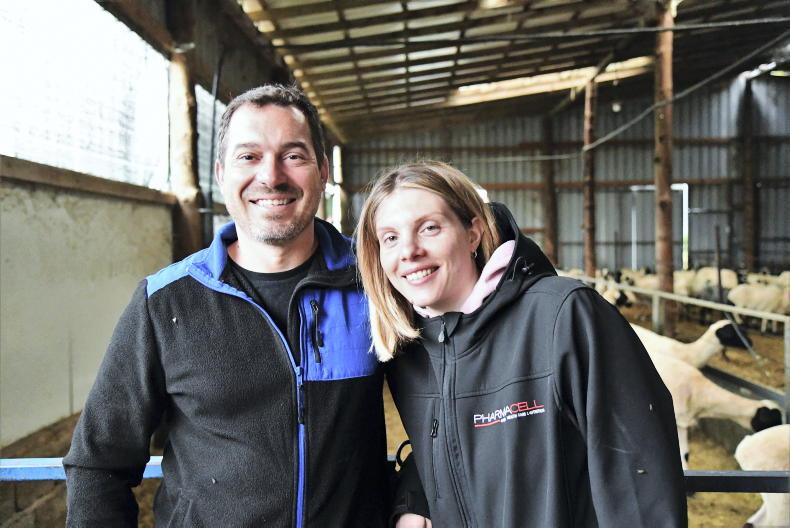
Michalis Avdanas and Catherina Kelliga. \ © European Union 2024, Cornelia Smet
Michalis and Catherina milk 300 Chios ewes, a native Greek breed from the island of the same name. They run 10 rams with the flock.
They farm 8ha of owned land plus 11ha of leased ground, on which they primarily grow fodder for the sheep, with a minimal amount of grazing taking place.
The flock is kept indoors, going outside to graze for approximately 30 minutes each day from mid-March to June, Michalis explains.
“When they go out, their state of mind changes, they don’t have to eat that much. The mere fact that they go out for a walk, leads them to produce more milk. They will eat exactly what they have to and the quantity that they have to, inside,” he says.
Beginnings
The dairy enterprise was started by Michalis’ father, Ioannis, in 2012. He begun by milking 40 ewes and expanded the flock to 80.
When Ioannis passed away in 2016, Michalis took over the farm. He continued to expand the flock with a focus on genetics that would increase milk yield.
In 2021, they moved to the shed that currently houses the flock, which Michalis built himself.
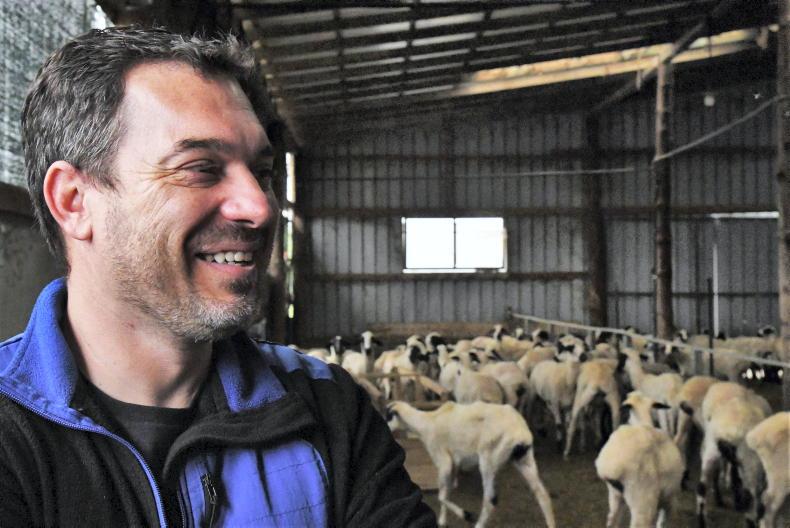
Michalis Avdanas. \ © European Union 2024, Cornelia Smet
There are no loans or debt on the farm, something he is very proud of.
“I built the farm on my own. Most likely there are better farms than mine, of course. But this establishment you see here has not a single euro of a loan to pay-off.”
However, they have faced his fair share of challenges.
“After five months in the new premises there was a very strong burst of wind that took the entire roof off,” Michalis explains.
“Half the farm was hundreds of metres away, so it was completely destroyed. I had to start rebuilding everything from scratch.
“This disaster meant some €25,000 of a loss. I started with a loss and that’s why I had to try to catch up. Now that I am back in profitable business, I can do many more things with the farm,” he says.
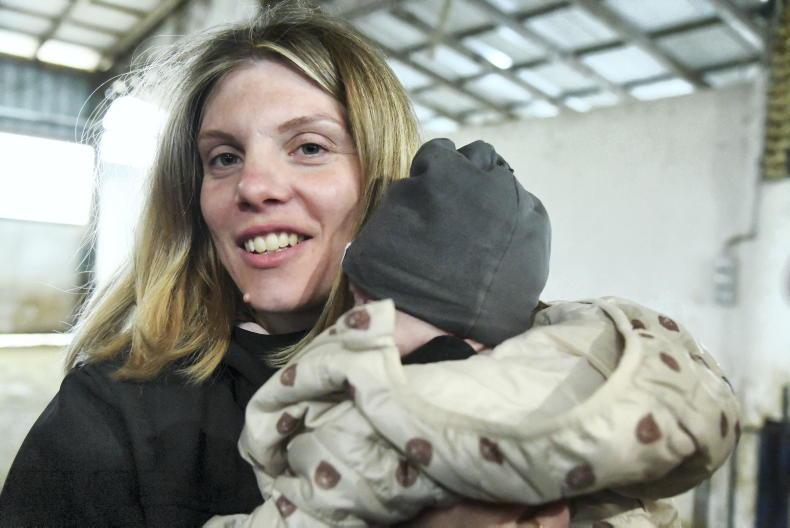
Catherina Kelliga with their newborn baby. \ © European Union 2024, Cornelia Smet
Organic
The farm is organic. They grow their own fodder, which is a mix of corn, alfalfa, silage and soya. This, Michalis says, was a driving factor in the decision to convert to organic.
“I wanted to differentiate myself compared to what others do. I was able to produce my own fodder, which was organic itself, why not use it?” Michalis explains.

Avdanas' Dairy Farm milks 300 Chois ewes, a native Greek breed. \ © European Union 2024, Cornelia Smet
The flock is milked year-round, but with the ewes on a rotation system. The ewes are divided into three groups, those that are high-yielding, low-yielding and dried off.
The high-yielding group eats 4.7kg of fodder/day and the low-yielding group eats 3.8kg
A ewe in the flock will spend approximately 220 days/year in milk. They operate a system whereby when a ewe’s milk goes below 1.5l/day, she goes to the ram.
The ewes on the Avdanas’ farm produce on average 460l/per year. In 2023, the flock produced a total of 76t of organic milk.
Parlour
While Michalis built the shed himself, he added that they were more than happy to spend money on the milking parlour, as this is where the money is made.
The flock is milked in a herringbone DeLaval parlour, with 24 stalls on one side and 12 milk lines.
At present, they only milk on one side of the parlour.
In the future, with further expansion of the flock, the other side of the parlour will be developed and utilised.
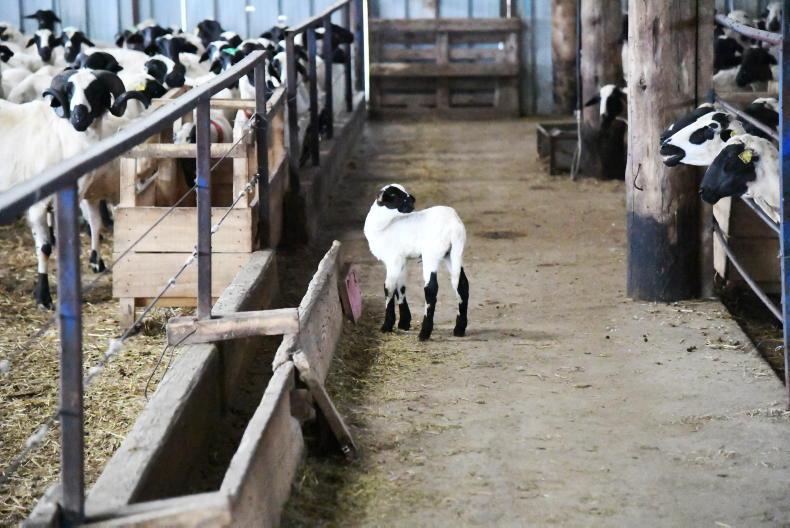
The prolificacy rate of the flock is 1.7 lambs/year. \ © European Union 2024, Cornelia Smet
The parlour has the capacity to milk approximately 180 sheep to the hour at present.
The sheep are milked three times daily; at 5am, 1pm and 8pm. A couple from Albania work on the farm alongside Michalis and Catherina. They supply milk on an annual contract basis to a processing company called La Farm.
The milk is used to make feta cheese, a protected designation of origin (PDO) product within the EU. Some 70% of this cheese is exported, while 30% is destined for the domestic market.
The farm was part of a co-op, but Michalis says they decided to leave. Greece has one of the lowest levels of farm participation in co-ops in the European Union (EU).

The milk is supplied to a processer making feta cheese. \ © European Union 2024, Cornelia Smet
This gives co-ops, which in general do not have shares in processing, a very weak negotiating position.
The milk price the farm currently receives is €1.57/l, roughly 5c ahead of the conventional price. As part of the contract with the processor, price cannot be negotiated.

Lambs are sold at around 35 days old, at approximately 9kg.\ © European Union 2024, Cornelia Smet
“Nobody, actually, can negotiate the price. The co-operatives are handling some 80m litres of milk and they still cannot negotiate,” he says.
Lambs
The prolificacy rate of the flock is 1.7 lambs/ewe annually. The ewe lambs are retained within the flock, while the ram lambs are sold for meat.
Lambs are sold at around 35 days old, at approximately 9kg. At present, lamb in Greece is selling at €8.30/kg and mature sheep at €4.30/kg.
Last Sunday, 5 May, was Orthodox Easter. The majority of Greeks are Orthodox Christian, making it the busiest time of year for lamb processing.
A ewe will spend on average six to seven years in the flock, Michalis explains. After that their yield drops significantly.
As in Ireland, the sheep are shorn once a year. This was done for the majority of the flock the week prior to our visit. Shearing costs €1.50/sheep and the price of wool is 10c/kg.

The dairy enterprise was started by Michalis Avdanas' father, Ioannis, in 2012.
Michalis and Catherina would like to expand the flock to 500 ewes, keeping the focus on high-yielding genetics, while continuing to invest in the farm.
“I want to expand the farm and buy some new pieces of machinery, like tractors and an automatic feeding device, in order to replace manual work with automatic,” he says.
Irish knowledge exchange
While the system Michalis and Catherina operate is in many ways vastly different to the majority of sheep farms in Ireland, there is crossover.
Last year, Irish sheep experts visited this area of Greece as part of a EuroSheep trip.

EuroSheep facilitates ovine knowledge exchange between Ireland, the UK, Spain, France, Italy, Greece and Turkey.
After speaking with this Irish group, Michalis says he is very interested in how the €uro-Star indexes work in aiding farmers to select more profitable breeding animals.
Michalis adds that he would love to utilise something similar on their farm.
Finances
In 2023, the farm made €178,000. Its expenses totalled €101,000. Of the €178,000, 81% came from the sale of milk, 8% from subsidies and 11% from the sale of animals.
The farm’s expenses were 58% for feed, 16% for payroll, 11% for infrastructure investment and the rest were miscellaneous operating costs.
Floods
In September 2023, Thessaly was hit by storm Daniel, which resulted in devastating flooding in the region, causing huge damage to farms.
Michalis explains they were “one of the lucky ones” in that they were only indirectly affected.
“There was a big impact on Elassóna because of the fact there was no more fodder to be found. This is how we have been affected indirectly, nothing more than that.
“And of course, for us, an entire week’s milk production had to be disposed of because no one could get to us to collect it. Some 1.5t of milk.
“In badly affected areas, you could see the drowned animals hanging from the beams of sheds.
“It was raining continuously for four days and for 20 days everything was under water, and still you can find areas that are flooded,” Michalis adds.
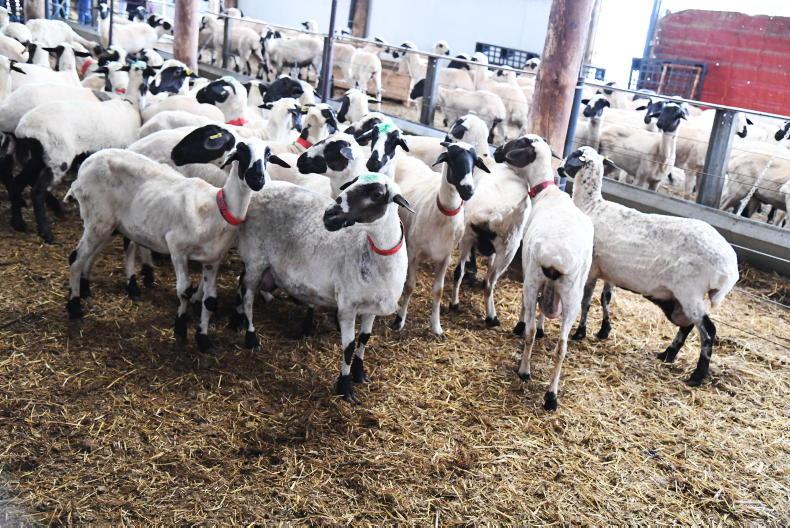
Michalis is very interested in how the €uro-Star indexes work in aiding farmers to select more profitable breeding animals. \ © European Union 2024, Cornelia Smet
The average farm size in Greece is 5ha.There are no farm inheritance laws in Greece, making it common for farms to be divided between all siblings. Greece has no formal state system for farmer training or advisory.In Greece, they measure land in strémmata (singular strémma), which is equal to 1,000m3 or approximately a quarter of an acre.Tillage and horticulture are the most common types of agriculture in Greece.Greece is the only country in Europe that produces cotton.Michalis Avdanas and Catherina Kelliga milk 300 ewes in the Greek region of Thessaly. They milk year-round, operating an indoor system. The farm is organic and they grow their own fodder. Milk is supplied on an annual contract basis to a feta cheese processor. 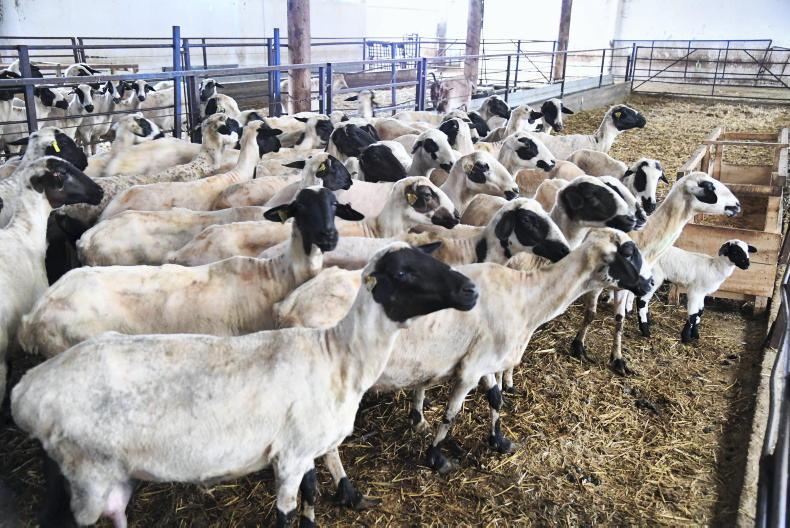
While the system Michalis and Catherina operate is in many ways vastly different to the majority of sheep farms in Ireland, there is crossover. \ © European Union 2024, Cornelia Smet
In the second instalment of this Greek farming series, we meet two farmers who lost their whole crop due to flooding.
At the mention of milking in Ireland, the mind automatically goes to cows.
Naturally so, as cows really are the only show in town when it comes to dairy in this country (barring a handful of farmers milking sheep and goats).
However, in Greece, that’s certainly not the case. When it comes to dairy, it’s far more common to milk sheep.
The country’s well-known dairy products such as feta cheese and Greek yoghurt are made from sheep’s milk, or a mixture of that and goats’ milk.
Over 41,000 farmers are involved in milking sheep, compared with over 15,000 farmers milking goats and just 2,500 dairy cow farms.
In terms of production, sheep milk is responsible for 42.3% of the country’s total milk production, while cows’ milk accounts for 39.7%.
The Irish Farmers Journal paid a visit to one such sheep dairy farm as part of a series of Greek farm tours organised by DG Agriculture, the wing of the European Commission responsible for policies on agriculture, rural development and CAP.
Native sheep
Located at the foot of Mount Olympus, Michalis Avdanas and his wife Catherina Kelliga own and run Avdanas’ Dairy Farm. Michalis is currently finishing an agricultural science degree, while Catherina is a vet.
The farm is in Elassóna, an area in Greece known for sheep. It is in the Thessaly region, the most productive agricultural part of Greece, owing to its central plain.

Michalis Avdanas and Catherina Kelliga. \ © European Union 2024, Cornelia Smet
Michalis and Catherina milk 300 Chios ewes, a native Greek breed from the island of the same name. They run 10 rams with the flock.
They farm 8ha of owned land plus 11ha of leased ground, on which they primarily grow fodder for the sheep, with a minimal amount of grazing taking place.
The flock is kept indoors, going outside to graze for approximately 30 minutes each day from mid-March to June, Michalis explains.
“When they go out, their state of mind changes, they don’t have to eat that much. The mere fact that they go out for a walk, leads them to produce more milk. They will eat exactly what they have to and the quantity that they have to, inside,” he says.
Beginnings
The dairy enterprise was started by Michalis’ father, Ioannis, in 2012. He begun by milking 40 ewes and expanded the flock to 80.
When Ioannis passed away in 2016, Michalis took over the farm. He continued to expand the flock with a focus on genetics that would increase milk yield.
In 2021, they moved to the shed that currently houses the flock, which Michalis built himself.

Michalis Avdanas. \ © European Union 2024, Cornelia Smet
There are no loans or debt on the farm, something he is very proud of.
“I built the farm on my own. Most likely there are better farms than mine, of course. But this establishment you see here has not a single euro of a loan to pay-off.”
However, they have faced his fair share of challenges.
“After five months in the new premises there was a very strong burst of wind that took the entire roof off,” Michalis explains.
“Half the farm was hundreds of metres away, so it was completely destroyed. I had to start rebuilding everything from scratch.
“This disaster meant some €25,000 of a loss. I started with a loss and that’s why I had to try to catch up. Now that I am back in profitable business, I can do many more things with the farm,” he says.

Catherina Kelliga with their newborn baby. \ © European Union 2024, Cornelia Smet
Organic
The farm is organic. They grow their own fodder, which is a mix of corn, alfalfa, silage and soya. This, Michalis says, was a driving factor in the decision to convert to organic.
“I wanted to differentiate myself compared to what others do. I was able to produce my own fodder, which was organic itself, why not use it?” Michalis explains.

Avdanas' Dairy Farm milks 300 Chois ewes, a native Greek breed. \ © European Union 2024, Cornelia Smet
The flock is milked year-round, but with the ewes on a rotation system. The ewes are divided into three groups, those that are high-yielding, low-yielding and dried off.
The high-yielding group eats 4.7kg of fodder/day and the low-yielding group eats 3.8kg
A ewe in the flock will spend approximately 220 days/year in milk. They operate a system whereby when a ewe’s milk goes below 1.5l/day, she goes to the ram.
The ewes on the Avdanas’ farm produce on average 460l/per year. In 2023, the flock produced a total of 76t of organic milk.
Parlour
While Michalis built the shed himself, he added that they were more than happy to spend money on the milking parlour, as this is where the money is made.
The flock is milked in a herringbone DeLaval parlour, with 24 stalls on one side and 12 milk lines.
At present, they only milk on one side of the parlour.
In the future, with further expansion of the flock, the other side of the parlour will be developed and utilised.

The prolificacy rate of the flock is 1.7 lambs/year. \ © European Union 2024, Cornelia Smet
The parlour has the capacity to milk approximately 180 sheep to the hour at present.
The sheep are milked three times daily; at 5am, 1pm and 8pm. A couple from Albania work on the farm alongside Michalis and Catherina. They supply milk on an annual contract basis to a processing company called La Farm.
The milk is used to make feta cheese, a protected designation of origin (PDO) product within the EU. Some 70% of this cheese is exported, while 30% is destined for the domestic market.
The farm was part of a co-op, but Michalis says they decided to leave. Greece has one of the lowest levels of farm participation in co-ops in the European Union (EU).

The milk is supplied to a processer making feta cheese. \ © European Union 2024, Cornelia Smet
This gives co-ops, which in general do not have shares in processing, a very weak negotiating position.
The milk price the farm currently receives is €1.57/l, roughly 5c ahead of the conventional price. As part of the contract with the processor, price cannot be negotiated.

Lambs are sold at around 35 days old, at approximately 9kg.\ © European Union 2024, Cornelia Smet
“Nobody, actually, can negotiate the price. The co-operatives are handling some 80m litres of milk and they still cannot negotiate,” he says.
Lambs
The prolificacy rate of the flock is 1.7 lambs/ewe annually. The ewe lambs are retained within the flock, while the ram lambs are sold for meat.
Lambs are sold at around 35 days old, at approximately 9kg. At present, lamb in Greece is selling at €8.30/kg and mature sheep at €4.30/kg.
Last Sunday, 5 May, was Orthodox Easter. The majority of Greeks are Orthodox Christian, making it the busiest time of year for lamb processing.
A ewe will spend on average six to seven years in the flock, Michalis explains. After that their yield drops significantly.
As in Ireland, the sheep are shorn once a year. This was done for the majority of the flock the week prior to our visit. Shearing costs €1.50/sheep and the price of wool is 10c/kg.

The dairy enterprise was started by Michalis Avdanas' father, Ioannis, in 2012.
Michalis and Catherina would like to expand the flock to 500 ewes, keeping the focus on high-yielding genetics, while continuing to invest in the farm.
“I want to expand the farm and buy some new pieces of machinery, like tractors and an automatic feeding device, in order to replace manual work with automatic,” he says.
Irish knowledge exchange
While the system Michalis and Catherina operate is in many ways vastly different to the majority of sheep farms in Ireland, there is crossover.
Last year, Irish sheep experts visited this area of Greece as part of a EuroSheep trip.

EuroSheep facilitates ovine knowledge exchange between Ireland, the UK, Spain, France, Italy, Greece and Turkey.
After speaking with this Irish group, Michalis says he is very interested in how the €uro-Star indexes work in aiding farmers to select more profitable breeding animals.
Michalis adds that he would love to utilise something similar on their farm.
Finances
In 2023, the farm made €178,000. Its expenses totalled €101,000. Of the €178,000, 81% came from the sale of milk, 8% from subsidies and 11% from the sale of animals.
The farm’s expenses were 58% for feed, 16% for payroll, 11% for infrastructure investment and the rest were miscellaneous operating costs.
Floods
In September 2023, Thessaly was hit by storm Daniel, which resulted in devastating flooding in the region, causing huge damage to farms.
Michalis explains they were “one of the lucky ones” in that they were only indirectly affected.
“There was a big impact on Elassóna because of the fact there was no more fodder to be found. This is how we have been affected indirectly, nothing more than that.
“And of course, for us, an entire week’s milk production had to be disposed of because no one could get to us to collect it. Some 1.5t of milk.
“In badly affected areas, you could see the drowned animals hanging from the beams of sheds.
“It was raining continuously for four days and for 20 days everything was under water, and still you can find areas that are flooded,” Michalis adds.

Michalis is very interested in how the €uro-Star indexes work in aiding farmers to select more profitable breeding animals. \ © European Union 2024, Cornelia Smet
The average farm size in Greece is 5ha.There are no farm inheritance laws in Greece, making it common for farms to be divided between all siblings. Greece has no formal state system for farmer training or advisory.In Greece, they measure land in strémmata (singular strémma), which is equal to 1,000m3 or approximately a quarter of an acre.Tillage and horticulture are the most common types of agriculture in Greece.Greece is the only country in Europe that produces cotton.Michalis Avdanas and Catherina Kelliga milk 300 ewes in the Greek region of Thessaly. They milk year-round, operating an indoor system. The farm is organic and they grow their own fodder. Milk is supplied on an annual contract basis to a feta cheese processor. 
While the system Michalis and Catherina operate is in many ways vastly different to the majority of sheep farms in Ireland, there is crossover. \ © European Union 2024, Cornelia Smet
In the second instalment of this Greek farming series, we meet two farmers who lost their whole crop due to flooding.



















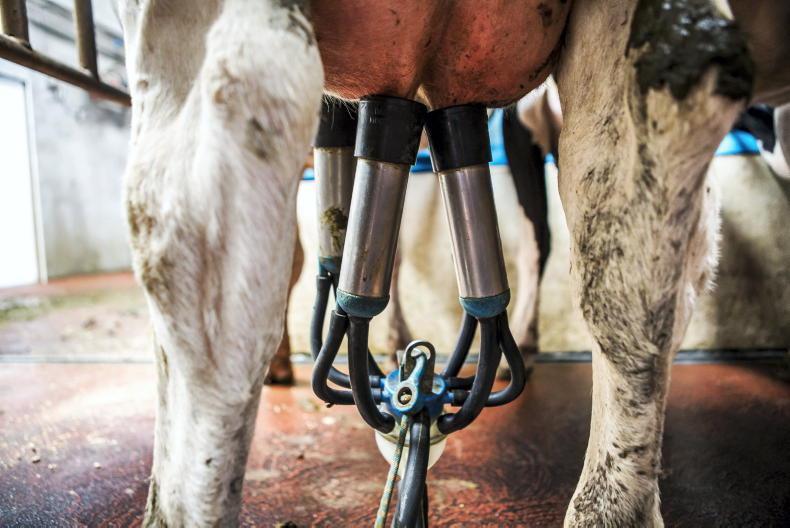

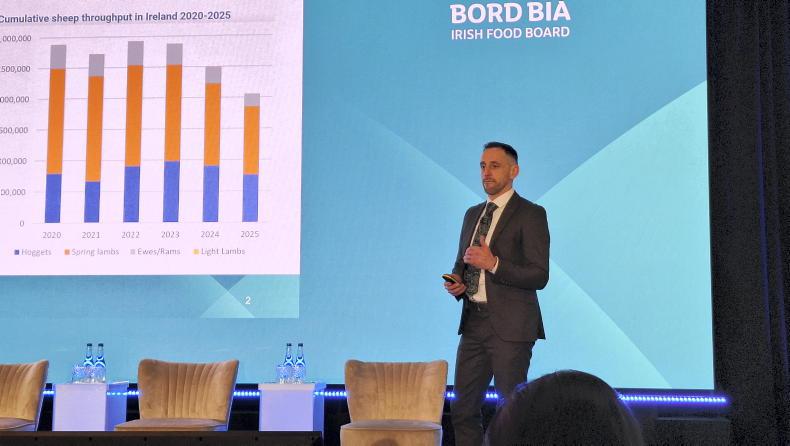
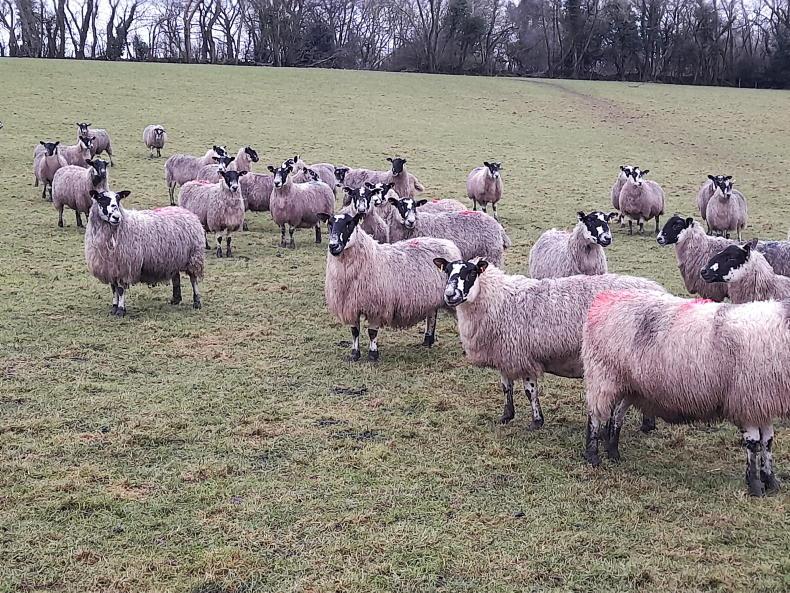
SHARING OPTIONS